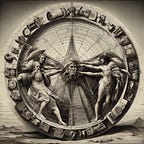Unraveling the Digital Evolution: From Web 1.0 to Web 3.0 and the Internet of Value
The internet has evolved significantly since its inception, with each phase bringing about fundamental changes in how we interact with online content and services. In this article, we explore the key differences between Web 1.0, Web 2.0, and the emerging concept of Web 3.0, shedding light on the evolution of the digital landscape.
Web 1.0: The Static Web
The first generation of the internet, often referred to as Web 1.0, emerged in the early 1990s. During this era, websites were primarily static, delivering information in a one-way manner.
Key characteristics of Web 1.0 included:
- Static Websites: Most websites were static HTML pages, offering information but lacking interactivity.
- Limited User Participation: User interaction was minimal, with limited options for feedback or engagement.
- Centralized Content: Information was produced and controlled by a select few, with users acting as passive consumers.
- Dial-up Connections: Internet access was often slow and limited, with dial-up connections being the norm.
Web 2.0: The Rise of Interactive and Data-Driven Web
The transition to Web 2.0 in the early 2000s brought a seismic shift in internet usage, marked by enhanced interactivity and the emergence of user-generated content. However, it also saw a significant development — companies began to capitalize on this newfound wealth of user data, leveraging it for monetization.
Key characteristics of Web 2.0 included:
- Dynamic and Interactive Websites: Web 2.0 introduced dynamic web pages, allowing content to be updated in real-time, creating a more engaging user experience.
- User-Generated Content: Platforms such as social media, blogs, and wikis empowered users to contribute and share content, shaping the digital landscape collectively.
- Collaboration and Social Networking: The era of social media platforms connected individuals and fostered collaboration on an unprecedented scale, creating vast networks of personal and professional relationships.
- Decentralization of Information: Information production and sharing became decentralized, with users contributing to the democratization of content creation. This shift led to diverse voices being heard on a global stage.
- High-Speed Internet: Broadband internet became widely accessible, enabling richer online experiences, from streaming videos to real-time communication.
However, with this newfound wealth of user-generated content and data, companies recognized the potential for monetization. Many began to act as custodians of user data, collecting vast amounts of client information to better understand and target their audience. This practice, while advancing the capabilities of online services, also brought about concerns surrounding data privacy and commercialization.
Web 2.0, therefore, ushered in an age of both remarkable interactivity and data-driven business models, as companies strived to strike a balance between providing valuable services and the responsible handling of user data.
Web 3.0: The Semantic Web
Web 3.0, often referred to as the Semantic Web, represents the next step in the evolution of the internet. Although it is still emerging, Web 3.0 is characterized by its focus on data and artificial intelligence, aiming to provide more intelligent and meaningful online experiences.
In this digital realm, users have metaphorical “wallets” under their complete control, securely stored in a decentralized digital environment.
These digital wallets empower users to transact online without compromising their data and privacy. Selective data sharing becomes the norm, and users determine what information they share and with whom. Blockchain technology ensures security, transparency, and trust in digital transactions.
Key characteristics of Web 3.0 include:
- Semantic Data: In Web 3.0, data is enriched with semantics, enabling machines to understand and process information contextually.
- Decentralization and Blockchain: Blockchain technology is poised to play a significant role in Web 3.0, enabling secure, trustless transactions and data ownership.
- AI and Machine Learning: Artificial intelligence and machine learning algorithms power intelligent search, personalized recommendations, and automation.
- Interoperability: Web 3.0 seeks to break down data silos and create a more connected digital ecosystem, allowing seamless interaction between applications and platforms.
- Virtual and Augmented Reality: VR and AR technologies are integrated into the web, providing immersive online experiences.
The Emerging Digital Landscape
As we journey into the realm of Web 3.0, the internet undergoes a remarkable transformation. It is evolving into a more intelligent, decentralized, and interconnected ecosystem. In this new digital landscape, users are in for an era of highly personalized, secure, and immersive online experiences.
Web 3.0 not only represents a significant milestone in the internet’s evolution but also marks the dawn of the ‘Internet of Value.’ This innovative concept is set to redefine how we access, interact with, and exchange not just online content and services, but also the very essence of value itself.
This ongoing journey holds the promise of further profound changes in the digital realm. Web 3.0 is at the forefront of reshaping our online world, bringing us closer to a future where value, information, and experiences are seamlessly interwoven, enriching the way we live, work, and connect.
